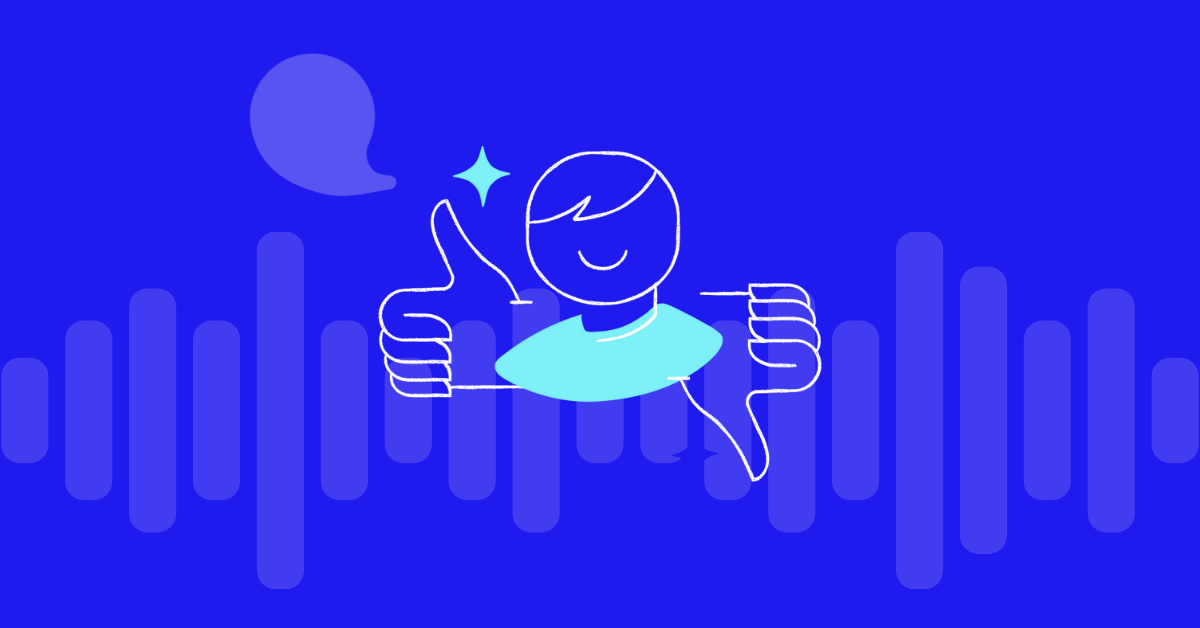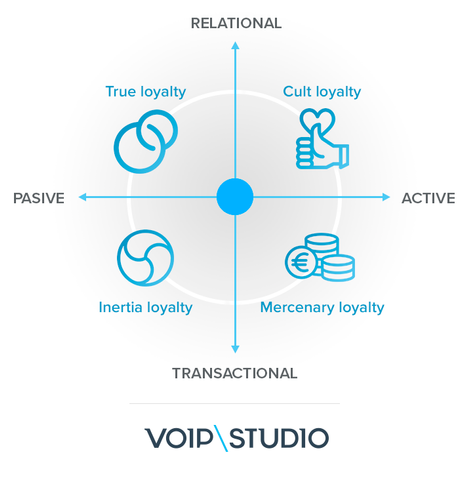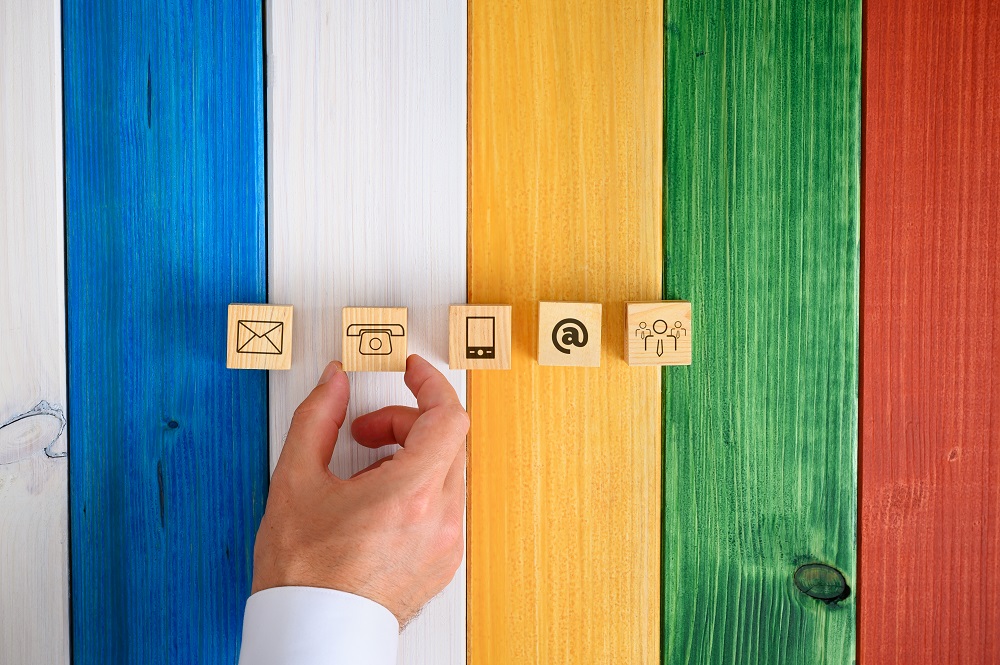
Table of contents
Imagine having a strong and loyal base of customers who believe in your brand, who will never buy from a competitor, and who are strong advocates of your brand to others. It’s the ultimate goal for any business, isn’t it? But retaining customers and building a loyal base does not happen overnight, it’s often the result of months or years of effort and consistent customer service.
A lot of companies claim they want to improve customer loyalty and retention but only pay lip service to the concept. Or they don’t know where to start. If you’re in the latter group, you’ve come to the right place. This in-depth guide will show you the intricacies of cultivating loyal customers and the rewards it can bring to your brand.
Why do you want loyal customers?
There are so many reasons to cultivate loyal customers that if it ever comes down to getting new customers vs retaining customers, most businesses should choose the latter. Most people understand this intuitively since with new customers you have to build a relationship from scratch. You need to onboard them, explain your products and services, and show how you can fulfill their needs.
Existing customers on the other hand already know all this about your brand. As long as you provide a consistent service experience, they will always buy your product over others. They already understand the brand and how it fits into their lives. If you sell a bunch of related products and services, they will look at those first before buying from the competition.
Consider a business that sells custom cakes for special occasions. If the bakery starts offering cupcakes or other pastries, a loyal customer will probably try them at least once. Unlike with a potential customer, you don’t have to persuade them to give your new product a shot. This means you can market additional products to your existing customers without spending much on advertising and marketing.
If that’s not enough to convince you of the value of retaining customers, consider the research. According to a study by Bain & Company, improving the customer retention rate by 5% can increase profits by anywhere from 25% to 95%! When you consider the fact that attracting a new customer is 5 to 25 times more expensive than retaining existing customers, you can see how valuable it is to cultivate brand loyalty. If your company goals do not include improving customer loyalty and retention, they should.
Difference between customer loyalty and retention
Most people consider customer retention and customer loyalty as pretty much the same thing but these terms have a specific meaning.
Customer loyalty
When it comes to customer loyalty there are degrees of it. For instance, you may have about 20% of extremely loyal customers, to the extent they will not even look at a competitor’s products over yours. Another 10% may be loyal customers (for now) but are always interested in trying out new products.
For the most part, loyal customer will always buy your products and services and is satisfied with the value they get for the money. Loyal customers will serve as brand advocates and persuade people they know to try your products. Word of mouth advertising and referrals will keep flowing from these customers, improving sales.
They are more likely to provide feedback so you can improve services or launch new products. Most loyal customers are also willing to overlook mistakes when they happen and will give you another chance to get it right.
Customer retention
Customer retention is a metric of how long customers have stayed with a particular brand, paying for products and services. There’s not much point in knowing your customer retention rate unless you understand it in context. Suppose your retention rate is 80%, that does not tell you if it’s good or bad for your business. Depending on the industry and market, it could be extremely positive or an indicator of something wrong.
Customer loyalty and retention may look similar so far but there is a vast difference in context and emotions. Just because a customer stays with you doesn’t mean they are a loyal customer. Some people are conservative and don’t want to rock with the boat with a new product because they’re comfortable with what they know. Or maybe they tried other brands but failed to get an adequate replacement.
These customers will not advocate for your brand or persuade others to buy from you. They will leave positive feedback but only if asked. So while they will stay as paying customers, they do not help with future growth.
Measuring customer loyalty and retention
As you can see, customer retention is a transactional metric. You’re only concerned whether your customers are buying from you at a rate you’re satisfied with or want to improve.
Customer loyalty is about measuring what happens before and after the transaction. Are you creating a satisfying experience for the customer to prevent future unhappiness? The focus is on turning happy/satisfied customers into promoters for your brand. So they will send you new customers who are more willing to give you a chance based on their referral. Loyal customers are key to the future growth of your business.
Measure customer retention
While customer loyalty and retention are distinct, they are also connected. By focusing on customer loyalty, you will improve retention rates as well. However, customer retention measures a transaction effect so there are clear-cut ways to calculate it.
Loyalty is much more tricky to handle and almost impossible to nail down at any particular instant. Many businesses use customer retention as an approximate proxy for loyalty since a significant portion of your current customer base should comprise customers who are loyal to some extent.
You can measure the customer retention rate for a month, for a quarter, or even for the entire year. It’s a simple metric and the formula to calculate is as follows:
- Retention rate = ((Customers at the end of the period – Customers acquired during the period) / Customers at the start of the period)) X 100
Let’s try that with an example. Suppose you started the quarter with 1000 customers, added 300, and lost 200 by the end of the quarter. So your retention rate would be:
- Retention rate = ((1100 – 300)/1000)*100 which is 80%.
But remember that this number has no context. It depends on seasonality, competing products, the life cycle of your product, new product launches, sales, discounts, and whether your product is nearing its end of life. Again, 80% may be good for some industries and a warning sign in other markets. So be sure to research further and don’t jump to conclusions based on one metric.
Customer loyalty frameworks
Even though customer loyalty is hard to measure, there are objective criteria or metrics you can use as a proxy. For instance, you may consider retention rates, contract renewal rates, or even usage metrics to gauge loyal customers. It’s highly probable that the customers who use your product or website often are more likely to be loyal.
But as highlighted earlier, there are degrees and levels of loyalty too. So how do you determine how many customers are loyal to your brand? There are a couple of frameworks that can help with it.
RAPID Loyalty Approach
The RAPID loyalty framework focuses on the three main ways you can grow your business: by retaining existing customers, by gaining new customers through referrals and word of mouth, and by purchasing more of the product. There are three different indices that measure a specific component of loyalty mentioned above.
Retention loyalty index
This measures the degree to which a customer is likely to stay with you and not switch to a competing brand. You can measure this by answering questions like:
- How likely is it that a customer will renew their contract with your business?
- Will the customer buy their next product from you or someone else?
Advocacy loyalty index
The ALI measures the extent to which customers will advocate for your brand to others. Basically how likely are they to refer their friends and family to your products and services? Asking the following questions through customer surveys can give you meaningful metrics such as:
- Will a customer advocate or recommend your brand to others?
- Are customers satisfied with the product?
- How likely is it for a customer to repurchase the product from you?
Purchasing loyalty index
This index measures another aspect of loyalty which is the extent to which customers will buy more of your products. A survey containing the following questions can give you some idea of the PLI:
- Will the customer buy additional products and services from your business?
- Will a customer upgrade to a higher tier of service or purchase accessories?
Four dimensions of customer loyalty
Another approach is the four dimensions of customer loyalty namely inertia loyalty, mercenary loyalty, cult loyalty, and true loyalty. You have 2 axes, one measuring how active or passive the customer is in engaging with the brand. And the second axis measures the transactional vs relational nature of the customer relationship.
Accordingly, each dimension has two aspects:
- Inertia loyalty – passive and transactional
- Mercenary loyalty – active and transactional
- Cult loyalty – active and relational
- True loyalty – passive and relational
Inertia loyalty
This customer is only loyal to you because they don’t have any other option. Brands such as mobile carriers, insurance companies, airlines, internet providers often have customers in this quadrant. In other words, these customers generally have little option but to buy from you or the barrier to exit is so high that they don’t bother to switch.
There’s nothing with having a customer base with inertia loyalty but disrupting industries that rely on this model is quite easy. For instance, Uber and Lyft have minimized the hassle associated with hailing a cab and hence lured customers away from traditional cab companies.
Mercenary loyalty
This customer is loyal to you because you offer the best deals, prices, or discounts on products and services. Customers here actively engage with the brand as they have to search for coupons or sign for discounts. Grocery stores and food chains typically have customers in this quadrant and many people will only shop at a particular brand or chain to maximize their savings.
Rewards programs are very attractive to such customers, so it’s a good way to optimize the customer experience. You can offer rewards for punching in (based on the number of visits), for referring customers to the brand (the customer gets $10 when a friend uses their code to buy something), or send them special offers before the public can access them.
Cult loyalty
These customers are loyal to you because they feel your brand is a part of their identity. When a customer meets someone else wearing the same clothes or using the product, they feel like they are part of a community. Brands that create communities based on shared values like sustainability, kindness to animals, or compassion for others tend to have customers in this quadrant.
Online content, shared community spaces and user-generated content are useful tools to optimize the customer experience in this dimension. These customers will continue to buy from you because competitors do not share the same values. For example, Patagonia is a company that will buy back worn-out clothes from their customers and uses them to make new clothes. This strategy reinforces the eco-friendly values of the brand which is very much focused on reducing waste and emphasizes recycling.
True loyalty
These customers stay with your brand because they genuinely love your products and services. When they buy and get something from you, opening the package puts a smile on their face. Many experts call this dimension the only one where you earn customer loyalty instead of buying it.
It takes a lot of a competitor to lure customers in this quadrant away from your brand. That is because it’s not easy to replicate your product/service or the customer experience. For example, some companies include free accessories or handmade prints when customers buy from them. Artists who sell their prints on Etsy might include an autographed sticker or some other accessory with every purchase. Such gestures cannot be easily duplicated by others in the same market.
The impact of communication on customer loyalty and retention
As you might expect, communication plays a crucial role in customer loyalty and retention. Friendly customer service, personalized recommendations, a mobile-optimized website, etc all go a long way to earn customer loyalty. Businesses can create and cultivate online community areas such as forums or chat boards to communicate with their customers. There are so many ways to engage with your customers that the difficult part is selecting which channel to use when or for what.
For example, a brand may use social media to announce surprise sales or offer discounts to its page followers. However, when it comes to customer support many customers still prefer phone calls over other channels. This means you cannot afford to forget old-school voice calls in favor of text messages.
Apart from incorporating an omnichannel approach to customer communication, you also need a dashboard to centralize management. If a customer sends you an email, your service department should be able to pick up the ticket and call them to resolve the issue if that’s the best option. They can then follow up with the customer on social media or through text messages. This kind of integrated communication system is invaluable when it comes to retaining and creating loyal customers.
A PBX phone system can help companies improve communication and brand experience for their customers. In the past, only companies of a certain size were able to have a telephony system that allowed them to offer their customers rich and seamless communication. Today, however, VoIP telephony solutions and cloud PBXs allow any business, of any size, to improve their telephone communications. These systems include features such as interactive voice response (IVR), call groups, call forwarding, call recording, warm call transfer, call centre capabilities and much more. Also, companies can get VoIP numbers at a very affordable price according to their needs.
How do you convert a customer into a loyal customer?
So how exactly do you convert a customer into a loyal one? A customer who will continue buying from you and even better, will recommend your brand to others is the ultimate goal and the following tips can help you get there faster.
12 tips to improve customer loyalty and retention
1. Loyalty or rewards programs
Creating and maintaining a loyalty program is a great way to improve customer loyalty and retention. But selecting the right program is also essential. Right from the beginning, you need to decide how you will reward customers. Will you offer discounts, preview upcoming sales, provide exclusive content, or encourage repeat purchases? Think of the type of customer you are targeting and tailor the experience accordingly.
2. Online communities
With the rise of social media networks, online communities are the perfect space to create more loyal customers. It can take many forms such as chat rooms, social media pages, forums, or even a dedicated area on your website. The important part is to provide a platform for your customers to engage with you and your brand. Managing online communities is hard work but the effort is generally worth it.
3. Show reciprocity and improve loyalty
Many businesses will reward loyal customers with incentives or special offers. But did you know that reciprocity can help you create loyal customers in the first place? Reciprocity is a social construct where people feel a sense of obligation to return a gesture of kindness. Surprising customers with free tickets or allowing them early access to a new product can help you create loyal customers who feel like reciprocating in kind.
4. Create a consistent experience
Whether it is communication or customer service, consistency is key. Create a cohesive and consistent user experience for customers regardless of whether they are browsing your website or calling your support center. Make sure to keep a record of your conversations, so you know what has happened in the past to bring the customer to the present situation.
5. Remove friction wherever possible
If a customer wants to buy something from you or get support for some product, make it as easy as you can for them. A customer on your website should be able to call you right from their browser. Offer to store the shipping address so customers can quickly order products in their cart. It’s surprising how many companies still make it so hard for customers to buy from them!
6. Communicate effectively
Despite the rise of social media, not all customers like using it when communicating with a brand. Similarly, customers may prefer different channels based on products, industry, and even the particular situation. So be sure to have a presence on multiple channels or in other words, go where your customers are. In addition, an appropriate strategy and communication style can also help you to improve your relationship with your customer and how they perceive your brand.
7. Exceed expectations
Nowadays customers expect businesses to meet expectations. The real delight for them is when companies go above and beyond their expectations. So make sure to take every opportunity to surprise and delight your customers.
8. Always ask for feedback and act on it
You know what’s the best way to improve your product? Ask your customers for feedback! However, make sure you also act on that feedback and implement it. Naturally not every customer request is feasible to implement but the ones you do will help you create loyal customers.
9. Personalize offers and recommendations
With the volume of data businesses collect on their customers, there’s no excuse to show them generic ads. Personalize your offers so your customers know that you remember what they like and dislike. Recommend products that they might be interested in and you might just have a loyal customer on your hands.
10. Highlight user-generated content
If you have a vibrant online community or a busy website, highlight user content such as testimonials or product photos. Customers will feel valued that their pictures are splashed across your front page!
11. Use social media to showcase your customers, not the brand
Many companies make the mistake of highlighting features of their brand or product in most ads. While it may work for traditional mass media, it’s not the best approach to social media. When marketing to customers there, make sure to showcase what you can do for them or how the product can benefit the customer.
12. Focus on positive experiences and moments
Research shows that people tend to remember negative events much more than positive ones. Odds are that your team communicates well with customers when disaster strikes. But what about all the happy moments, positive events, and shared memories you have with your customers? Take every opportunity to focus on positive memories and showcase them frequently.
In the past, having communications systems was reserved for large enterprises, but today, even small businesses can have advanced communications systems at a reasonable cost with VoIP-based cloud PBX solutions.
More from the blog
Want to improve your business communication?
Unlock enterprise-class call center power at affordable prices – no hardware, no delays, no surprises!









